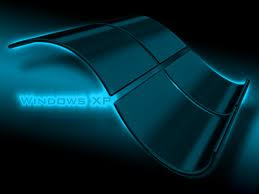
With any operating system, the best way to install is to start clean, formatting the computer and erasing all data. This isn't the only way to install an operating system, however -- Windows XP was originally sold as an upgrade for Windows 98 and Millennium Edition users. You can install XP over an existing operating system.
Disc Types
Microsoft sold Windows XP in two editions - Home and Professional - and promoted both as upgrades to the previous versions of Windows. In addition, some computer manufacturers offered users a free upgrade to Windows XP, too, usually for systems that sold with Windows 98 or Windows ME. These users received a disc labeled "Windows XP Upgrade" in most cases. These discs, though labeled differently, were XP installation discs in disguise. The contents of the disc are identical to an XP Home or Professional Edition that you'd find in a store.
Upgrade Install
When XP first came out in 2001 and users were changing from older operating systems to Home or Professional Edition, Microsoft primarily recommended an upgrade install. This is the most straightforward way to install Windows XP, though not the most effective. You may prefer this install type as it doesn't format the hard drive and all personal information, but the circumstances in which an upgrade install can occur in 2011 are limited. To use the upgrade, you have to start with Windows 98 or ME. Insert the XP disc while the computer is running and click "Upgrade to Windows XP." Follow the prompts to complete the installation.
Clean Install
Most commonly, you'll need to reinstall Windows XP -- either as the result of a crash or because your computer is running slowly. Reinstalling means putting a fresh copy of the operating system on your computer and removing everything that was there before. It sounds pretty serious, but you can easily prepare for a reinstall by backing up your important files to a CD or external hard drive. It's a good idea to have your device drivers downloaded and backed up, too, particularly for your network card, video card and sound card. If you bought your computer from a major manufacturer, these drivers are likely included on separate CD-ROM discs.
The Install Process
To install Windows XP from its CD, you need to boot to the CD. The disc contains all of the files needed to run the setup and to boot your computer, but you have to point your PC at the disc. Before you begin the installation, unplug all nonessential peripherals from your computer, leaving only the keyboard and mouse. Insert the Windows setup CD and reboot your system, looking for a message saying "Press any key to boot from CD." Press a key, and then press "Enter" to load the setup. Press "F8" to accept the license agreement, and then press "C" to continue installing Windows. Select your primary hard drive, which is usually labeled "C:" and press "Enter" to select it. Press "F" to format the partition, then choose a file system type -- NTFS for drives larger than 32 GB -- and press "Enter." Windows copies all the necessary files to your hard drive and reboots -- don't press a key to boot to the CD this time -- and completes the installation. The process takes about 30 minutes, depending on the speed of your PC.
Source : eHow
No comments:
Post a Comment